The Station
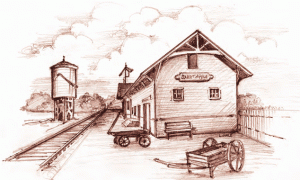 Tucked away in our subconscious is an idyllic vision. We see ourselves on a long trip that spans the continent. We are traveling by train. Out the windows we drink in the passing scene of cars on nearby highways, of smoke pouring from a power plant, of row upon row of corn and wheat, of flatlands and valleys, of mountains and rolling hillsides, of city skylines and village hills.
Tucked away in our subconscious is an idyllic vision. We see ourselves on a long trip that spans the continent. We are traveling by train. Out the windows we drink in the passing scene of cars on nearby highways, of smoke pouring from a power plant, of row upon row of corn and wheat, of flatlands and valleys, of mountains and rolling hillsides, of city skylines and village hills.
But uppermost in our minds is the final destination. On a certain day at a certain hour we will pull into the station. Bands will be playing and flags waving. Once we get there so many wonderful dreams will come true and the pieces of our lives will fit together like a completed jigsaw puzzle. How relentlessly we pace the aisles, damming the minutes for loitering waiting, waiting, waiting for the station.
“When we reach the station, that will be it!” we cry. “When I’m 18.” “When I buy a new 450SL Mercedes Benz!” “When I put the last kid through college.” “When I have paid off the mortgage!” ‘When I get a promotion.” “When I reach the age of retirement, I shall live happily ever after!”
Sooner or later we must realize there is no station, no one place to arrive at once and for all. The true joy of life is the trip. The station is only a dream. It constantly outdistances us.
“Relish the moment” is a good motto because it isn’t the burdens of today that drive men mad. It is the regrets over yesterday and the fears of tomorrow. Regret and fear are twin thieves who rob us of today.
So stop pacing the aisles and counting the miles. Instead, climb more mountains, play more golf, eat more ice cream, go barefoot more often, swim more rivers, watch more sunsets, laugh more, cry less. Life must be lived as we go along. The station will come soon enough.


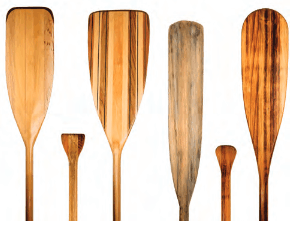 By Norm Crerar, USGTF Contributing Writer
Vernon, British Columbia
By Norm Crerar, USGTF Contributing Writer
Vernon, British Columbia
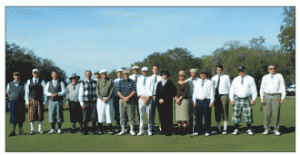 By Mike Stevens USGTF Member, Tampa, Florida
By Mike Stevens USGTF Member, Tampa, Florida
 By Dr. Gregg Steinberg USGTF Sports Psychologist, Nashville, Tennessee
By Dr. Gregg Steinberg USGTF Sports Psychologist, Nashville, Tennessee
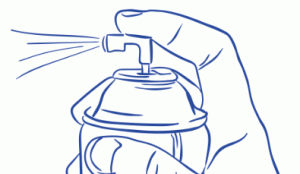 By Larry Van House, USGTF Member, Camp Hill, Pennsylvania
By Larry Van House, USGTF Member, Camp Hill, Pennsylvania
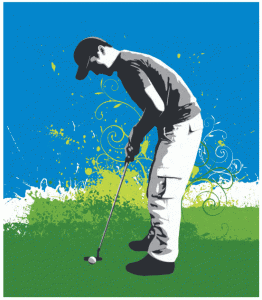
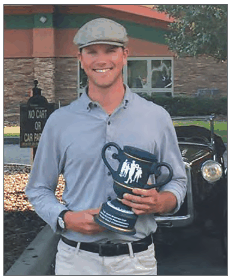 By Mike Stevens USGTF Member, Tampa, Florida
2018 Champion, Dylan Malafronte
A distant sound of the High-lands gently wafted in through the grand oaks and morning mist. There must be golf about to commence. Indeed, the thud of a well-struck brassie was in the offing as the 2018 United States Professional and Amateur Hickory Golf Championships were about to get underway. Once again, the game as it was originally played here in 1922 at the opening of Temple Terrace Golf & Country Club in Tampa, Florida, was on display, with gentlemen and gentlewomen in proper golf attire vying for the title of champion golfer.
The day is a celebration and remembrance of three historical events that have long since been forgotten with time. From 1895 to 1897, the U.S. Amateur and U.S. Open were played concurrently on the same golf course in the same week. Both amateurs and professionals play on this day for their respective trophies. Those trophies are dedicated to America’s first golf pro and protégé, John Shippen and Oscar Bunn. Shippen was an African-American who played in the 1896 U.S. Open and finished sixth. Bunn was a Shinnecock Indian who helped in the building of the Shinnecock Hills Golf Club that hosted the tournaments that year. Lastly, in 1925, the Florida Open was hosted by Jim Barnes at Temple Terrace and billed as the greatest gathering of professional golfers for a sporting event.
The Temple Terrace Golf & Country Club, laid out by noted architect Tom Bendelow, was described by the Tampa Tribune as a brute of a course stretching out over 6,400 yards. Probably not worthy by today’s standard, but a stout test for the century-old clubs used back then. It was the centerpiece for the first planned community in the United States, spearheaded by Bertha Palmer, a socialite from Chicago. But the area predates the community, as Spanish explorer Don Francisco Maria Celi made his way up the Hillsborough River looking for pine trees to use as masts for his ships. The extensive pine forest made the area popular for turpentine production and logging. Ms. Palmer purchased 19,000 acres on which the homes and golf course were created. The city of Temple Terrace was named for the new hybrid Temple orange, which was first grown here in the surrounding groves that were established on the property.
All in all, the links held up well against some excellent modern-day hickory golfers, with Ocala, Florida’s Dylan Malafronte carding an even-par 72 to grab the John Shippen Cup, a margin of two strokes clear of Mark Harman from Ridgeland, South Carolina. On the amateur side, Virginia’s Deal Hudson won the Oscar Bunn Trophy with a score of 81. Not to forget our fair maidens, the low ladies’ pro this year was repeat winner Jennifer Cully of St. Petersburg, Florida, with an excellent round of 86.
A big thank you goes out to the USGTF for their title sponsorship of this tournament and continued support for the history of our game.
By Mike Stevens USGTF Member, Tampa, Florida
2018 Champion, Dylan Malafronte
A distant sound of the High-lands gently wafted in through the grand oaks and morning mist. There must be golf about to commence. Indeed, the thud of a well-struck brassie was in the offing as the 2018 United States Professional and Amateur Hickory Golf Championships were about to get underway. Once again, the game as it was originally played here in 1922 at the opening of Temple Terrace Golf & Country Club in Tampa, Florida, was on display, with gentlemen and gentlewomen in proper golf attire vying for the title of champion golfer.
The day is a celebration and remembrance of three historical events that have long since been forgotten with time. From 1895 to 1897, the U.S. Amateur and U.S. Open were played concurrently on the same golf course in the same week. Both amateurs and professionals play on this day for their respective trophies. Those trophies are dedicated to America’s first golf pro and protégé, John Shippen and Oscar Bunn. Shippen was an African-American who played in the 1896 U.S. Open and finished sixth. Bunn was a Shinnecock Indian who helped in the building of the Shinnecock Hills Golf Club that hosted the tournaments that year. Lastly, in 1925, the Florida Open was hosted by Jim Barnes at Temple Terrace and billed as the greatest gathering of professional golfers for a sporting event.
The Temple Terrace Golf & Country Club, laid out by noted architect Tom Bendelow, was described by the Tampa Tribune as a brute of a course stretching out over 6,400 yards. Probably not worthy by today’s standard, but a stout test for the century-old clubs used back then. It was the centerpiece for the first planned community in the United States, spearheaded by Bertha Palmer, a socialite from Chicago. But the area predates the community, as Spanish explorer Don Francisco Maria Celi made his way up the Hillsborough River looking for pine trees to use as masts for his ships. The extensive pine forest made the area popular for turpentine production and logging. Ms. Palmer purchased 19,000 acres on which the homes and golf course were created. The city of Temple Terrace was named for the new hybrid Temple orange, which was first grown here in the surrounding groves that were established on the property.
All in all, the links held up well against some excellent modern-day hickory golfers, with Ocala, Florida’s Dylan Malafronte carding an even-par 72 to grab the John Shippen Cup, a margin of two strokes clear of Mark Harman from Ridgeland, South Carolina. On the amateur side, Virginia’s Deal Hudson won the Oscar Bunn Trophy with a score of 81. Not to forget our fair maidens, the low ladies’ pro this year was repeat winner Jennifer Cully of St. Petersburg, Florida, with an excellent round of 86.
A big thank you goes out to the USGTF for their title sponsorship of this tournament and continued support for the history of our game.